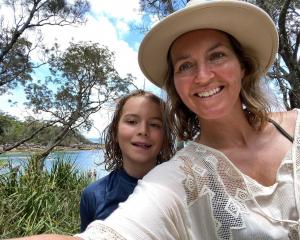

It’s a far cry from reading a zombie apocalypse trilogy over Christmas, but wading through the press releases and state of the nation speech has snapped my brain and energy back into motion.
I am optimistic that this focus on commercialisation might just be the catalyst for transitioning our focus from pure invention to production, capturing value for all New Zealanders — not just founders and investors.
There are many brilliant and passionate people I respect at Callaghan Innovation. My opinion of this restructure being needed is in no way critical of them, but rather the system within which they had to work.
For a long time I have stressed the importance of aligning our research and development and education policy to industry — so we can realise greater wider economic benefits from these enormous government investments.
Because that’s what any government spend is ultimately — an investment of a finite resource in the future of New Zealand, so we need to make sure we’re generating maximum benefit for all of us from every dollar spent.
Commercialisation is literally defined as "the process of bringing new products or services to market". In my very black and white interpretation, this means literally making a product and exporting it to the market.
So I really hope that what we see from these reforms is a focus on commercialisation extending to production. How else can we achieve a more productive economy if we don’t produce things?
Cue exclamations of "but we don’t make stuff in New Zealand any more", "manufacturing is dead", "AI and 3-D printing is going to replace it all".
Bollocks. Yes, we are at the bottom of the world, however, we’re also world leaders at high-tech, high-value, bespoke manufacturing — take Buckleys Systems, Douglas Pharmaceuticals, Fisher & Paykel Healthcare and Rocket Lab for example.
I’m sure New Zealand Trade & Enterprise (NZTE) will agree, with 60% of New Zealand’s exports being manufactured goods and a strong focus on identifying and helping companies export higher-value goods into higher-value markets. Which is why I’m stoked they’ve picked up the new Invest NZ agency — this is basic product market fit.
What Nicola Willis and Shane Reti need to realise though is we’re yet to achieve "product fit". To fully commercialise our advanced inventions and realise economic growth, we need advanced manufacturing capabilities that are world class.
That’s going to require investment in manufacturing-process innovation. It’s not about asking for grants and handouts, but we need to realise we actually don’t have the right skills, equipment or capital investment settings to support this.
Let’s start with skills — we don’t just need foreign investment, but foreign talent. Because we don’t have the right pool of manufacturing engineers in New Zealand to get the flywheel spinning, and we won’t until we get our education system recalibrated. We need targeted immigration to continue to be a bridge to that — and it might only take 10 to 15 years before we see the fruits.
For example, when we look at those countries referenced, like Denmark, they’re experts at making things — not just inventing things. Tertiary engineering enrolments in Denmark are 23%, Switzerland 18% and Germany 26%. New Zealand’s is only 9%.
Within this, mechanical engineering and electronics engineering each account for 2%, and manufacturing engineering is just 0.11%.
For those laymen and women like me, I summarise manufacturing engineering as the discipline of efficient highly repeatable manufacturing processes required to produce products of a quality and at a price that is globally competitive. It’s understanding manufacturing commercials, quality management systems and how to deploy emerging technologies such as advanced robotics, employing AI for process automation, creating digital twins, process innovation such as VR tools for fabrication and assembly.
That’s why it’s fantastic that we have a minister for manufacturing in this government and the newly created economic growth portfolio.
I don’t have much experience running a country, but I’ve got a fair bit of leading a company, a number of not-for-profits and a dabble in community activism.
I have learnt that it takes balance — we must keep our core business bubbling in order to fund activity, that’s our tourism, our farmers; we must focus on maintaining and upgrading our productivity tools, that’s our manufacturers alongside our research and development of automated technologies. And we must continually be developing new markets and sales pipelines, as when we take our eye off that even briefly we create a hole down the track — that’s our wonderful team at NZTE building global markets and our scientists developing new ideas.
We need people, and science and technology, working collectively to accelerate and improve value capture at every step along the way.
• Sarah Ramsay is chief executive of United Machinists.











